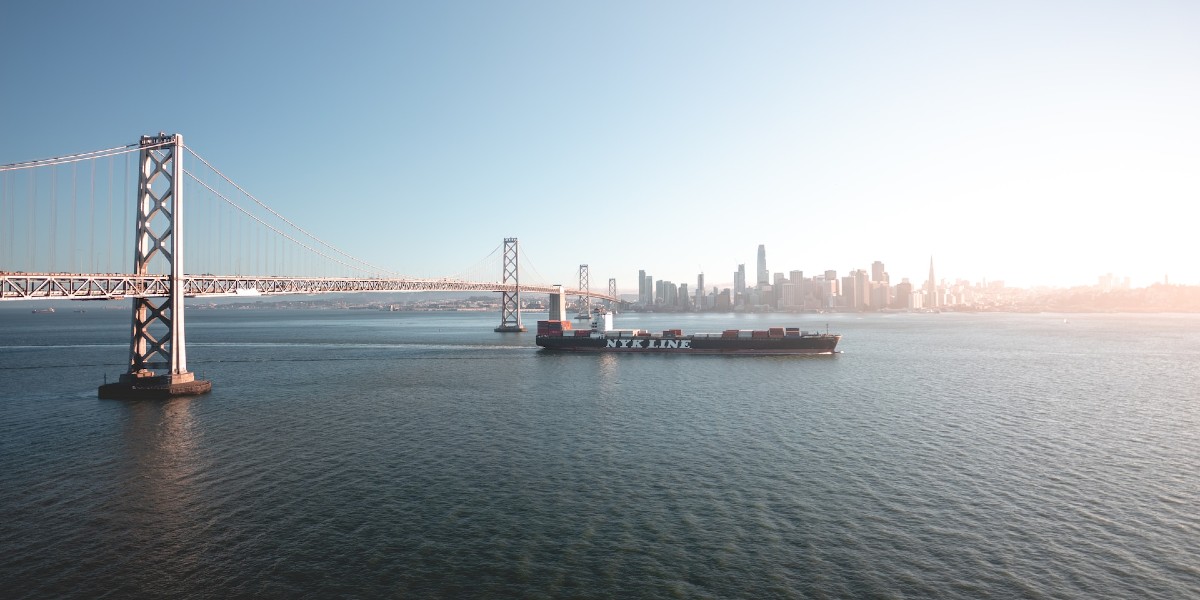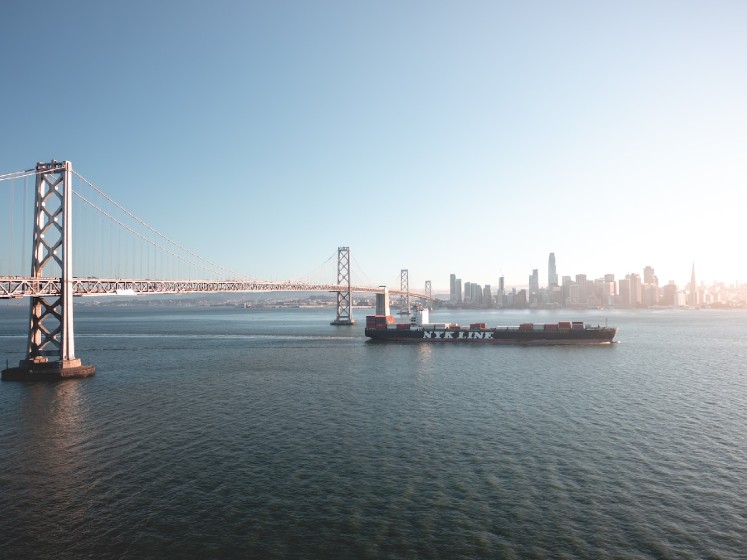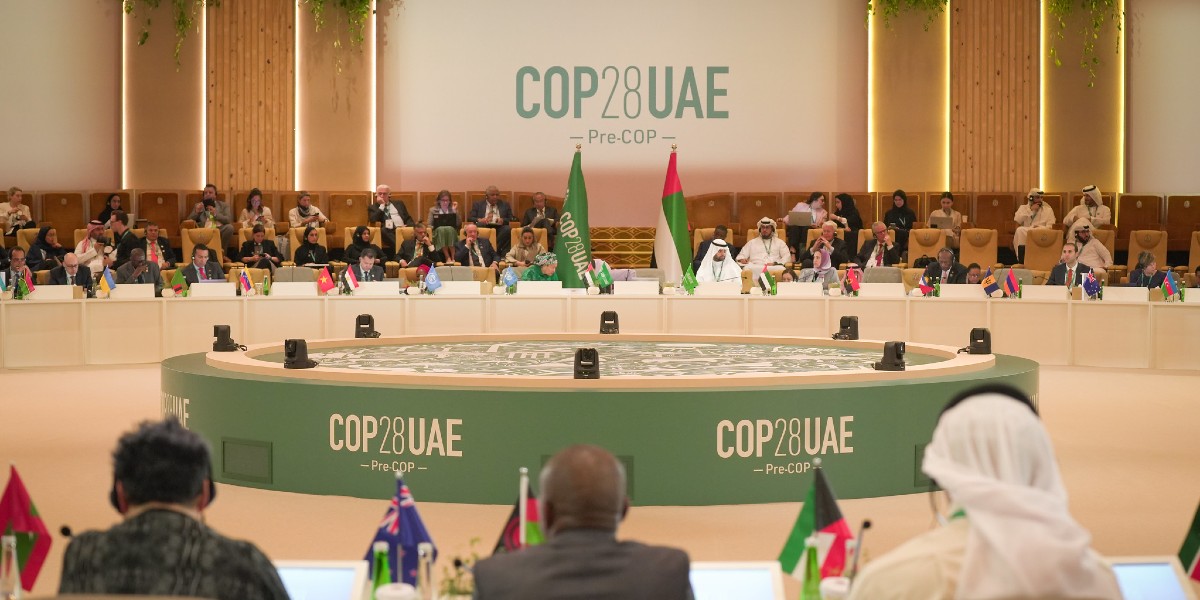In this post, Aidan Arasasingham, a MSc International Political Economy student at LSE, looks at the promise and perils at the nexus of climate and trade policy going into COP28. Climate policy and trade policy discussions have been converging over the past few years, and this year’s COP will feature the first “Trade Day” – spotlighting the role trade must play in decarbonisation.

The nexus of climate and trade is set to receive an enhanced spotlight at this month’s COP28 climate summit in the United Arab Emirates. The role of trade policy in the climate transition will be elevated across a range of trade-related events, including the first “Trade Day” at COP. While this increased focus on trade in international climate diplomacy is welcome, growing geopolitical competition at the nexus of climate and trade among the United States, European Union, and China highlights the hard diplomatic work necessary to leverage trade as a means to accelerate decarbonisation globally.
The intrinsic link between trade and climate has long been understood. Empirical studies illustrate that the rapid pace of globalisation brought about by broad-based trade liberalisation has led to a rise in the greenhouse gas emissions that underpin climate change. Today, between 20–30 percent of global CO2 emissions are associated with the production and transport of goods and services that are exported and imported in global trade, with 75 percent of such emissions coming from a few hard-to-abate sectors, including energy and transport. But growth in global trade has not only had a net-negative effect—it has also spurred greater carbon efficiency in certain supply chains, increased clean technology diffusion, and contributed to greater global prosperity.
While trade has been a key part of the climate problem, it also plays an integral role in climate solutions.
While trade has been a key part of the climate problem, it also plays an integral role in climate solutions. Innovations crucial to the green transition, including solar panels, electric vehicle batteries, and sustainable steel and aluminum, all rely on complex global value chains dependent on cross-border research, development, sourcing, processing, manufacturing, and sale. No single country can innovate and manufacture its way out of the global climate crisis alone. To accelerate their own green transitions, individual countries inherently must rely on and trade with other countries, too.
However, in today’s fragmenting global economic landscape, countries are increasingly doing the opposite. Supply chain disruptions during the Covid-19 pandemic, disruptions to energy markets from Russia’s invasion of Ukraine, and rising geopolitical competition between the United States, China and Europe have led policymakers in many capitals to rethink reliance on global value chains on economic security grounds. Rather than pursuing a virtuous circle of multilateral coordination to green trade, countries are increasingly pursuing unilateral approaches to secure their own green supply chains and competitive advantage at the expense of others—imperiling climate cooperation and risking slower, more expensive decarbonisation globally.
Trade and climate officials gathering in Dubai for COP28 will have to grapple with this fundamental tension: in an era of growing geopolitical competition, can states shape trade policies that are a force for accelerating the green transition?
Against this backdrop, trade and climate officials gathering in Dubai for COP28 will have to grapple with this fundamental tension: in an era of growing geopolitical competition, can states shape trade policies that are a force for accelerating the green transition? How the United States, European Union and China work to reconcile their own climate strategies and meet the needs of the emerging market economies will be important to answering that question.
After years of relative inaction, the United States passed its largest climate package last year, the Inflation Reduction Act (IRA). The IRA’s trade and industrial policy implications are profound: aiming to reshore key supply chains crucial to the green transition, the United States approved $369 billion in green subsidies, enacted new domestic content requirements, and included specific sourcing provisions for critical minerals. The IRA has been criticised by developed and developing countries alike for securing US green competitiveness at the expense of other countries and running afoul of WTO trade rules. The European Union, which lacks a free trade agreement with the United States to qualify for generous IRA EV tax credits, believes its producers will be competitively disadvantaged as a result. Meanwhile, developing countries fear they will be unable to compete with massive IRA subsidies to attract necessary climate investments—and fail to move up the global value chain as a result.
The European Union’s signature climate and trade instrument, its new Carbon Border Adjustment Mechanism (CBAM) just entered into transitional force in October. This new landmark tool aimed at preventing carbon leakage will start subjecting certain goods manufactured in non-EU countries to a carbon levy if these countries have less stringent climate policies. The United States and many other countries across the globe lack a carbon price while China’s carbon price is far below Europe’s. As a result, they would face tariffs for selling goods in the European Union, also drawing criticism from both developed and developing countries about fairness and WTO compatibility.
China continues to play a central role in global climate policy as the world’s largest carbon emitter and player in green supply chains. China continues to be an innovative leader and manufacturer of clean energy technologies including solar panels and electric vehicle batteries at competitive price points. China has also committed to green its signature Belt and Road Initiative (BRI), which has financed the rapid development of key energy and trade infrastructure in developing countries. At the same time, China’s arbitrary use of economic coercion, violation of WTO trade rules, and critiques of “debt-trap diplomacy” have led the United States and European Union to believe that “de-risking” reliance on China is in their climate and economic security interest.
There is already modest, but tangled, progress being made to foster climate and trade cooperation between these three major economies. The United States and European Union, through their attempts to negotiate a new Global Arrangement on Sustainable Steel and Aluminum (GASSA), have diagnosed the problem, and proposed solutions to disincentivise the proliferation of carbon-intensive steel (even though this could come at the expense of China and developing countries). China agreed to some of its most ambitious climate commitments in the EU-China Comprehensive Agreement on Investment (CAI), though this deal seems to be indefinitely tabled. The United States and China also have made recent progress toward re-starting avenues for climate cooperation after efforts stopped following the visit of then-US Speaker of the House Nancy Pelosi to Taiwan in 2022.
Productive, multilateral discussions on climate and trade tensions at COP28 could pave the way for progress toward a more cooperative approach to issues at the nexus of climate and trade.
However, while there are examples of modest progress, the climate and trade approaches taken by the world’s three largest traders remain starkly divergent. Productive, multilateral discussions on climate and trade tensions at COP28 could pave the way for progress toward a more cooperative approach to issues at the nexus of climate and trade. The prioritisation of “Trade Day” on 4 December and the creation of the “Trade House” pavilion at COP28 will help elevate these kinds of climate and trade conversations and could help socialise more concrete negotiations in future COP contexts.
But even though there is great promise to the role trade can play in global decarbonisation, without the convergence of US, European, and Chinese trade and climate policies within a more robust multilateral framework, progress on issues at the nexus of climate and trade will remain limited.
Banner photo by Will Truettner on Unsplash
This article represents the views of the author, and not the position of the Department of International Relations, nor of the London School of Economics.





